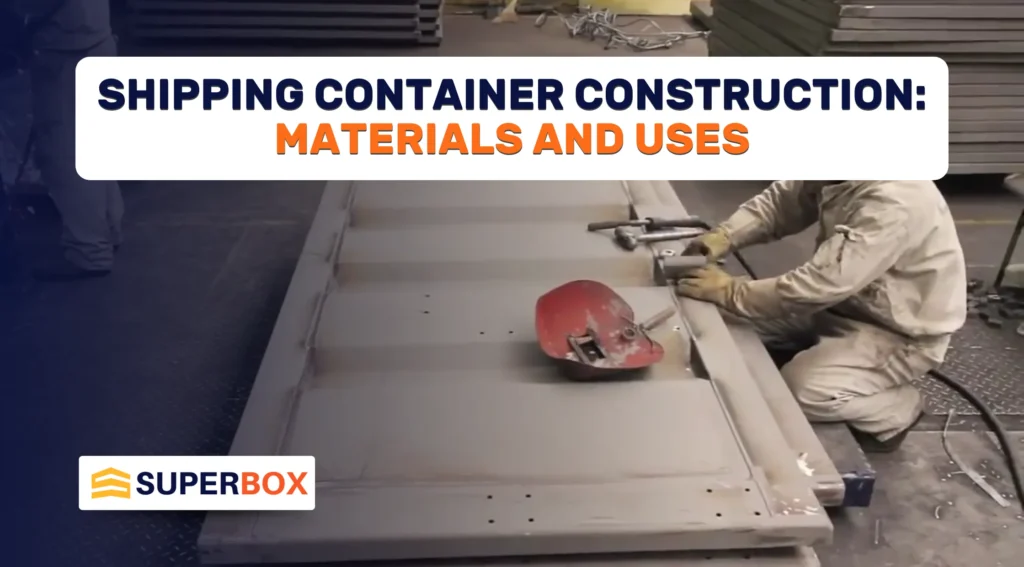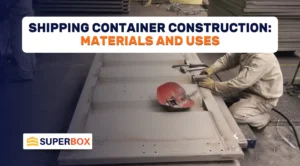Shipping containers play a crucial role in global trade, helping to move goods efficiently across long distances. But have you ever wondered how these containers are built? The construction of shipping containers combines advanced engineering and high-quality materials to ensure they are durable and reliable. In this blog, we will explore the various components of shipping container construction, including steel production, corrugated steel panels, door mechanisms, and protective coatings.
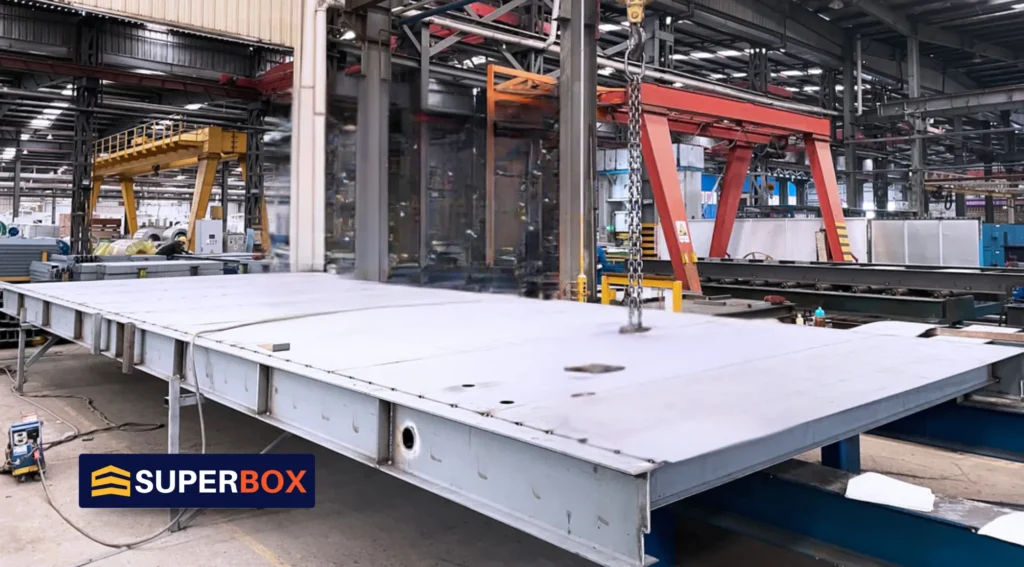
Steel Production
At the core of every shipping container is high-strength steel, mainly corten steel. This steel is famous for its durability and ability to withstand harsh weather conditions, making it ideal for shipping containers. The production process begins with melting iron ore and combining it with other elements to enhance its strength. Once the steel is ready, manufacturers cut and shape it into various components, including corner posts and the floor frame.
These components are essential for the overall structure of the container, ensuring it can handle the challenges of transportation and the elements. By using high-quality corten steel, shipping containers are designed to create strong, reliable structures that can last for years, whether they are transporting goods or being repurposed for creative uses.
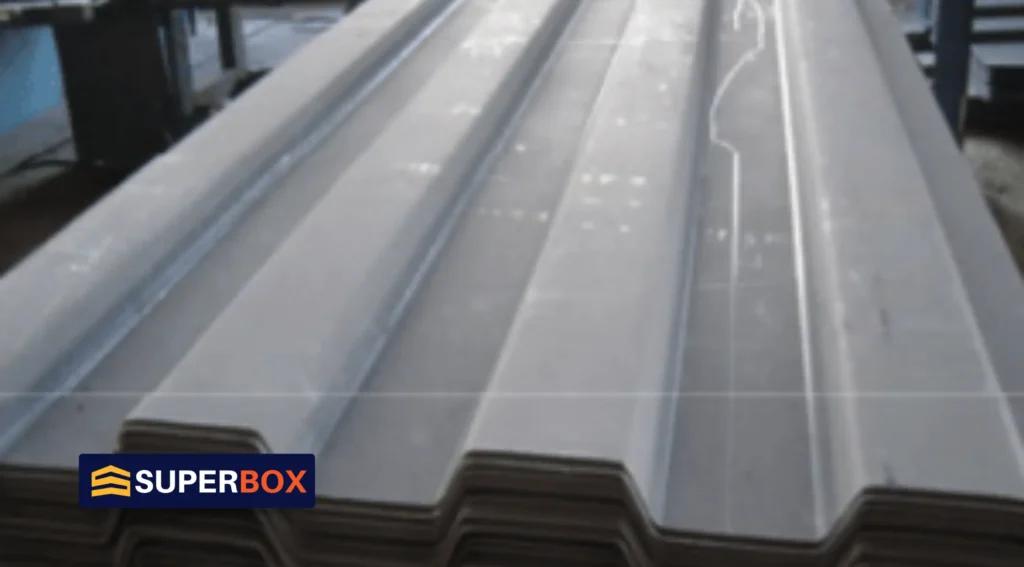
Corrugated Steel Panels
One important aspect of shipping containers is the corrugated steel panels used for their side walls. These panels are made by rolling steel sheets into a wavy shape, which boosts their strength while keeping them lightweight. This corrugated design offers excellent resistance to bending and deformation, making it perfect for the side walls of containers.
This construction method not only enhances the durability of shipping containers but also adds to their visual appeal, especially in shipping container homes. The strong, corrugated panels allow designers to create stylish and functional living spaces that stand up to the elements. As more people seek innovative housing solutions, these durable and attractive panels play a key role in using shipping containers to create unique homes and structures.
Door and Hatch Mechanisms
The design and construction of shipping container doors and hatches are crucial for both usability and security. Manufacturers create different types of door mechanisms to allow easy access while ensuring that the contents remain safe from theft and damage. Many shipping containers feature heavy-duty locking systems that offer added protection against unauthorized entry.
These doors are built to be strong and durable, capable of handling frequent use and a range of environmental conditions. This robustness ensures that the doors function smoothly over time, even in tough weather. Overall, well-designed doors and hatches not only enhance the security of the container but also make it more convenient for users to load and unload their goods safely.
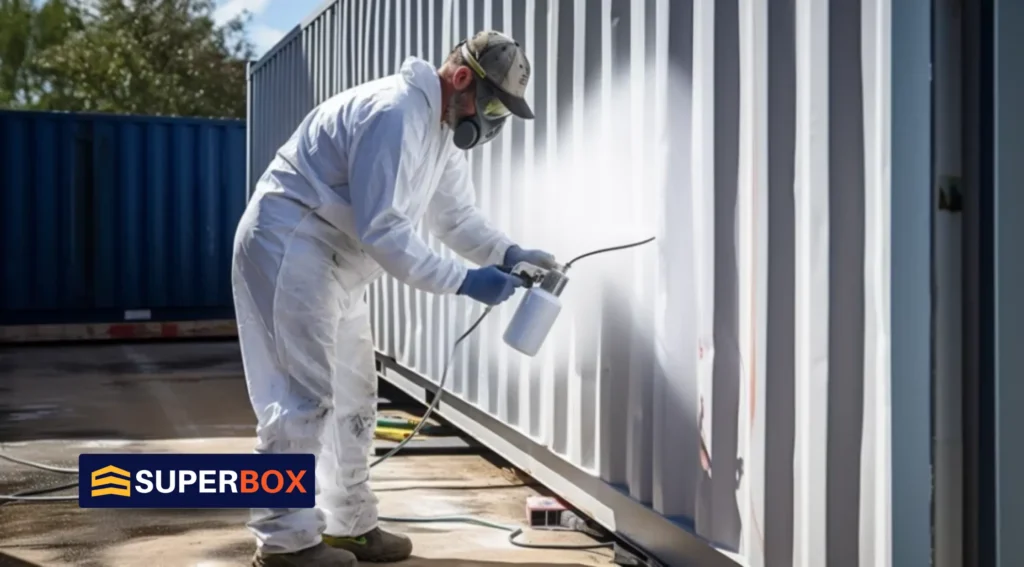
Sealants and Coatings
To extend the life of shipping containers, manufacturers use sealants and coatings that guard against corrosion and damage. These protective layers are vital for keeping the container intact, especially in harsh conditions with moisture and extreme weather. One popular choice is weathering steel, which forms a protective rust layer that helps prevent further corrosion, ensuring the container stays strong over time.
Regular maintenance of these coatings is important, especially for shipping container buildings and homes, where exposure to the elements can be more pronounced. By taking care of these protective layers, owners can ensure that their shipping containers remain durable and functional, making them a reliable choice for various uses.
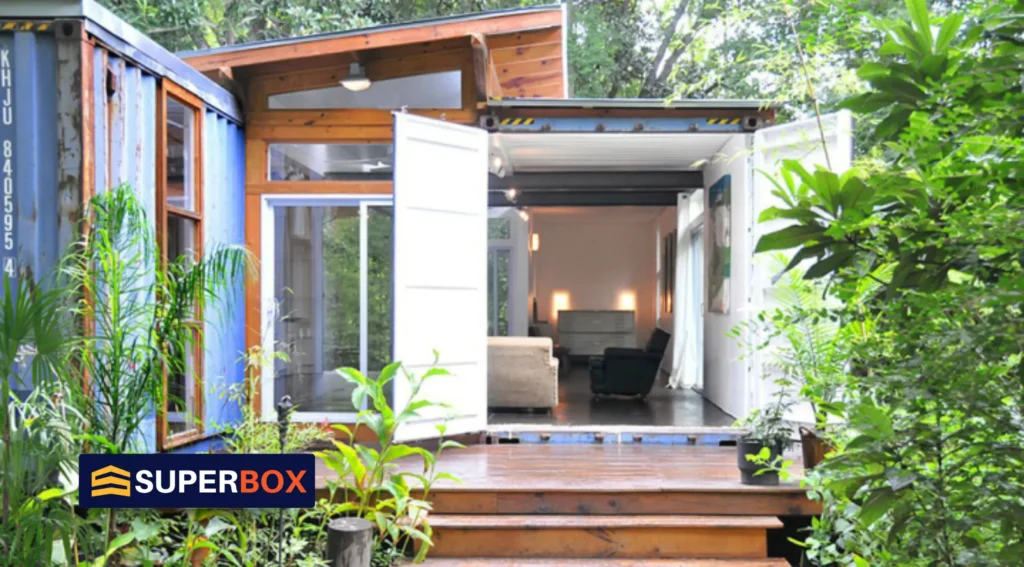
Building Materials
Shipping containers are flexible structures that can be transformed into unique living spaces, such as shipping container houses. By using traditional construction materials like marine plywood for interior finishes and sturdy steel floors for support, builders can adapt these containers for a variety of purposes. This adaptability allows them to create larger, multifunctional spaces, highlighting the potential of shipping containers in modern architecture.
Shipping containers can be modified to meet building codes, ensuring that they provide safe and reliable options for construction. With their durable and sustainable features, these containers are increasingly popular for innovative housing solutions and other creative projects, making them a valuable choice in today’s construction landscape.
Conclusion
In conclusion, the construction of shipping containers is an interesting mix of engineering and quality materials. From the strong corten steel that forms the main structure to the corrugated steel wall panels that add strength and style, every part is important for making containers reliable. The well-designed doors and hatches ensure security and easy access, while protective coatings help the containers last longer.
As shipping containers become more popular for various uses, including homes and businesses, their flexibility highlights their potential in modern architecture. By understanding how shipping containers are built, we can see their importance not only in global trade but also in sustainable living. With ongoing improvements and a focus on durability, shipping containers offer smart and practical solutions for builders and homeowners, paving the way for more eco-friendly construction options.
Explore shipping containers with SuperBox!
At SuperBox, we offer a wide variety of high-quality shipping containers that are perfect for many different uses, from simple storage solutions to creative living spaces.
Our goal is to ensure your complete satisfaction. Our friendly team of experts is here to support you every step of the way. We’re ready to answer any questions you have and help you find the ideal container that fits your needs.
Don’t wait any longer—contact us today at 210-557-006. Let us show you how we can help you discover the best shipping container solution for your project!

